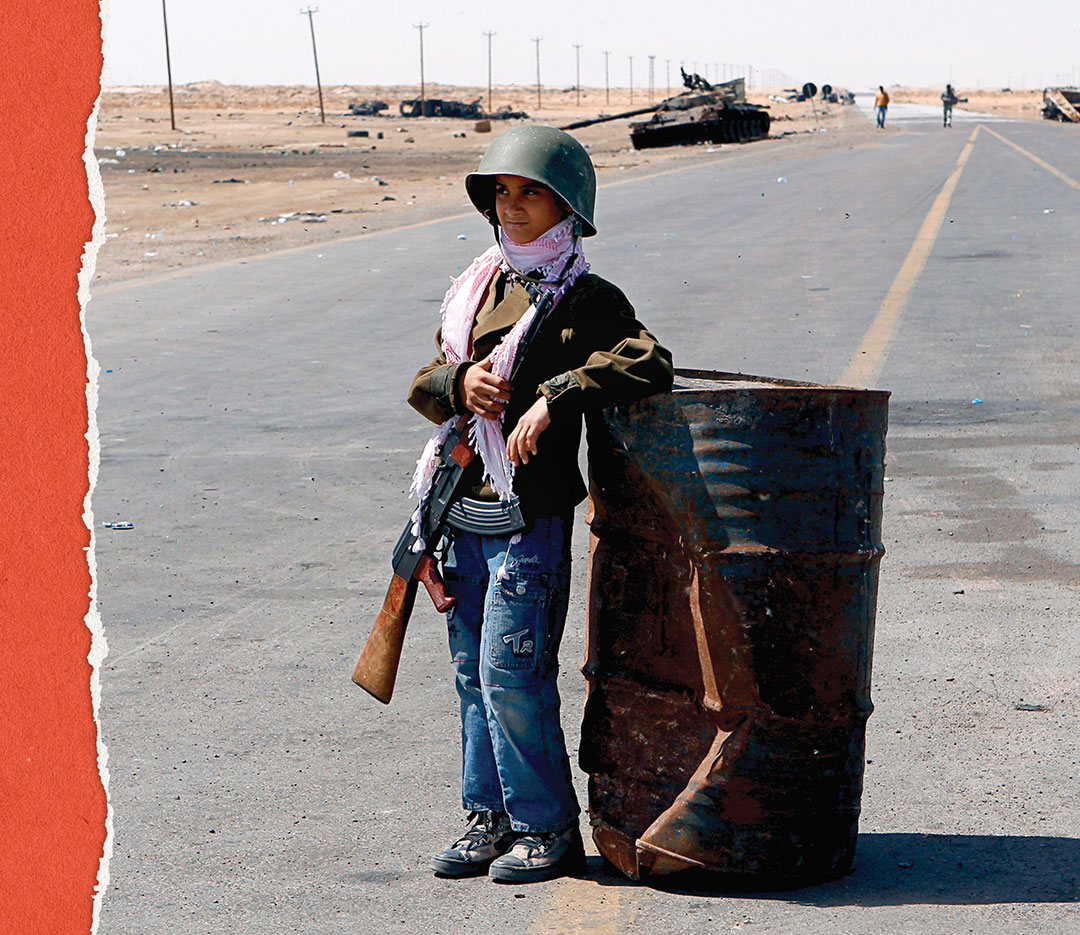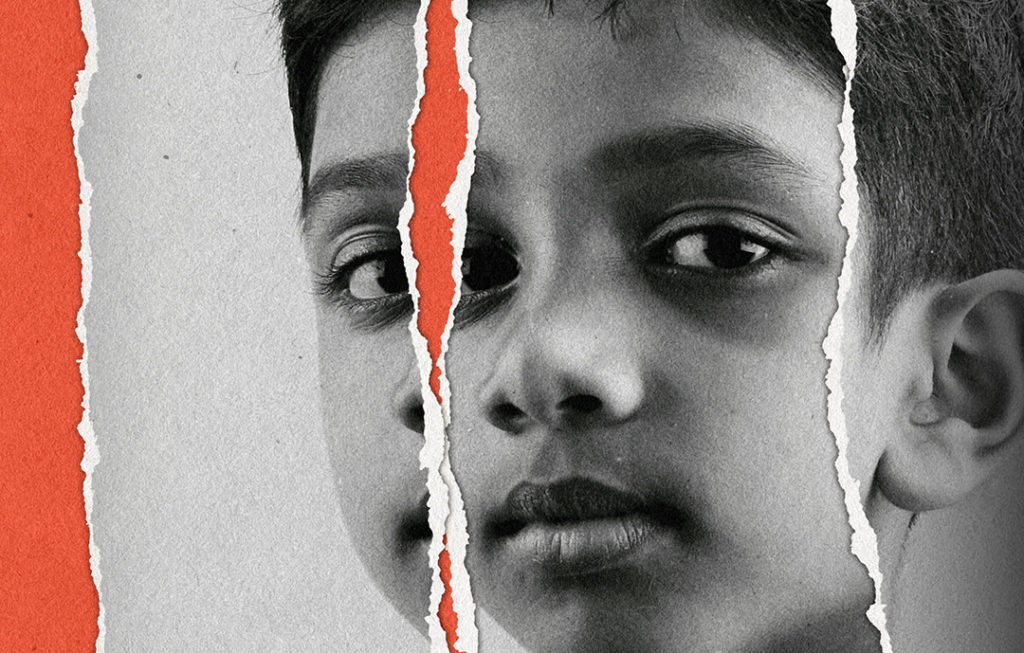Nations need treatment plans to rehabilitate children brainwashed by Daesh terrorists
DR. HUSSEIN ALLAWI, CEO, THE AKKAD CENTER FOR STRATEGIC AFFAIRS AND FUTURE STUDIES
Humanity today continues to face dangers, though these dangers differ from one region to the other. Most people concede that terrorism is among the worst of these dangers. Starting in the 1970s, terrorism and terrorist groups became increasingly active so that today we’re experiencing the third generation of terrorism. However, the latest terrorist generation (Daesh, al-Nusrah Front, al-Shabaab, Boko Haram and al-Qaida) has started to use a new weapon, namely children and teenagers, described as cubs of the caliphate — a concept developed by Daesh that distinguishes the new terrorist generation from previous ones.
The adults responsible
On September 5, 2016, Abu Harith Al Iraqi was killed by an Iraqi airstrike while riding his bicycle in Mosul. The Iraqi Air Force received intelligence that “Abu Harith” was the officer assigned to train so-called cubs of the caliphate as part of Daesh.
Daesh kidnapped children between the ages of 8 and 14 and brainwashed them to kill and spread the poison of Daesh’s extremist ideology before setting them loose in the streets of Mosul after many terrorists had already escaped the city.
A second Daesh terrorist called Abu Hamza Al Belgiki (The Belgian) also played a role in training the cubs. In 2018, the Central Criminal Court in Baghdad, Al Rusafa, condemned Al Belgiki to death by hanging.

The spokesman for the Supreme Judicial Council of Iraq, Abdsattar Birqdarn, stated: “The second panel of the Central Criminal Court in Al Rusafa heard the case of the accused Tarek Jadoun, nicknamed Abu Hamza Al Belgiki, who is a member of Daesh. This terrorist participated in many operations and is responsible for training those referred to as the cubs of the caliphate. Al Belgiki, who is of Moroccan origin, is one of the most prominent wanted foreign terrorists who fought in Syria and Iraq as a member of Daesh.”
Al Belgiki was prosecuted under the provisions of Article 4/1 of the Anti-Terrorism Law of Iraq of 2005.
Brainwashing the cubs
The terrorist organization targets kids as young as 6 years old and instills extremist teachings in them that encapsulates Daesh’s approach to child rearing, education, and fomenting hatred.
Hisham Al Hashimi, an Iraqi expert on terrorist groups, points out that the introductions of most books that are part of Daesh’s Sharia curriculum say the following: “By the grace of God, the Islamic State enters a new era by planting the first seed of Islamic education based on the method of the Book, prophetic guidance and an understanding of the pious predecessors, with a clear vision that is neither Eastern nor Western but is instead based on the Quran and the Prophet, far from the desires, vanities and delusions of Eastern socialism or Western capitalism, political party brokers or the deviant curricula found across the Earth.”
Documents and Twitter postings revealed the educational philosophy of Daesh. Grades in school were divided into three stages — primary, middle and preparatory — spread over nine years. Each school year consisted of two academic terms lasting a total of 10 hijri (the Muslim lunar calendar) months.
The primary grades encompassed five years, followed by two years in the middle grades and two years for the preparatory stage. Academic subjects were grouped into three categories: sciences, religion and vocational training. At the conclusion, the student graduated to higher education.
In its psychological and propaganda campaign against its opponents, Daesh broadcast a promotional video, Cubs of the Caliphate, about the lives of the cubs. It showed training camps created to receive the sons of terrorists — referred to as jihadists — who were killed in the battles during the triumphant advance of the Iraqi forces during Operation Inherent Resolve between 2014 and 2017.
According to journalist Raya Aljalabi, the production was widely propagated on social media by supporters of the terrorist organization on social media between 2014 and 2016. The “promo” was broadcast for hours, undoubtedly shocking viewers, particularly professionals who analyze the phenomenon of terrorism and the content of terrorist propaganda.
Hadathani Abi (My Father Told Me) was considered the most dangerous video broadcast by Daesh, mainly because of its technical sophistication and the implicit messages the video wanted to convey.
It suggested that Daesh would get revenge by training and brainwashing cubs of the caliphate to act as ticking time bombs — suicide bombers ready to blow themselves up when ordered to do so by their leaders.
Mia Bloom, a Canadian-born professor of security studies, divided Daesh children into five categories:
- Children of foreign or migrant fighters
- Children of local fighters
- Children left in orphanages under control of Daesh
- Children forcibly taken from their parents
- Children who voluntarily joined Daesh
Anti-Extremism treatment
The model offered by the Akkad Center for Strategic Affairs and Future Studies in Iraq offers an approach to treating the phenomenon of violent extremism, particularly the extremism of the cubs of the caliphate, to address the phenomenon of child and teenage fighters within Daesh. It is an approach based on observing the behavior of the children who were subject to cultural indoctrination by Daesh in an attempt to make them terrorist fighters to be used in terrorist attacks against local communities. The model is as follows:
- Isolation: Diagnosis of the cubs’ environment and living conditions
- Treatment using counterindoctrination programs to remove the negative energy and takfiri ideologies through a series of stages
- Ideological replacement with soft ideas and consumer culture to direct the tendency toward positive growth and instill a culture more grounded in reality than the violent utopianism preached by Daesh
- Field tests to measure the growth of positive behavior among the former cubs of the caliphate
- Reintegration
- Further evaluation
To address the violent extremism inherent in the cubs of the caliphate phenomenon, Iraq needs dynamic national policies. This is what was proposed by Dr. Ahmed Qasim Muften of the Al-Bayan Center for Planning and Studies in Baghdad:
First, the country needs to restructure and redesign the academic curriculum to focus on building practical content rather than theoretical content in academic lessons.
Second, Iraq must encourage a democratic and community-oriented civic culture to weaken all forms of the culture of violence and extremism: religious, ethnic, factional and regional. The schools and media have a fundamental role to play in this ideological reformation.
It requires a national effort initiated by the state through all its official and civic bodies — executive authority should achieve this vision institutionally — and must be an integrated and concrete project that must be maintained permanently.
Third, we must instill the values of tolerance, diversity, human rights and acceptance of others through the relevant institutions using guidance and education. This requires that the ministries of Education and Higher Education take the leading role instead of the religious endowments, along with the Ministry of Youth and Sports and media agencies.
The development and inclusion of curriculum tackling terrorism is the way to diminish the impact and activities of terrorist organizations and will limit the ability of the persons in question to create insurgent and terrorist groups that threaten the stability achieved in liberated areas, particularly in Iraq, which announced the liberation of all its territories in 2017.
Conclusion
The phenomenon of the cubs of the caliphate is one of the major challenges of the legacy of Daesh and one that preoccupies intelligence and security agencies. Progress will require national programs along with international, governmental, public and social partnerships to establish a comprehensive treatment plan instead of one focused solely on the issues of security and criminality.
Social, educational, economic and media dimensions are rarely priorities in Middle Eastern countries that have suffered from terrorism. But treating the effects of terrorism is a necessity rather than a choice in the process of preventing violent extremism. Failure to address such extremism allows it to become a fire that spreads over time.
To treat the phenomenon of the cubs of the caliphate, we must create models that differ in substance but are the same in essence. It’s all part of the strategic art for combating violent extremism and terrorism.

